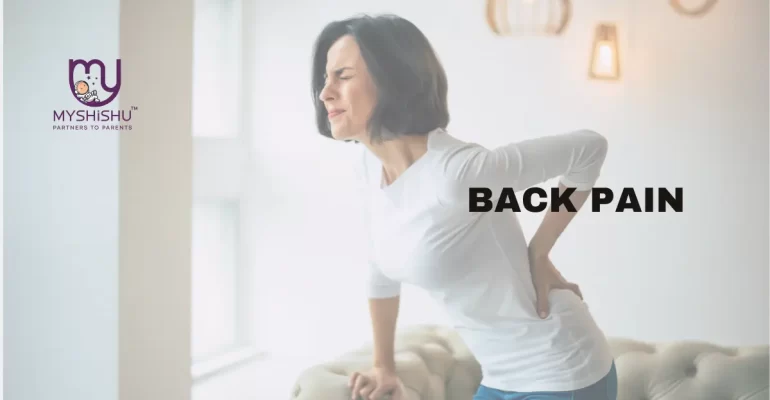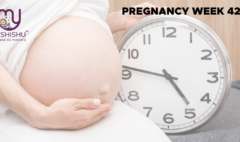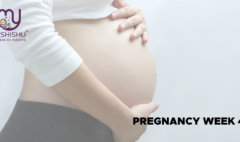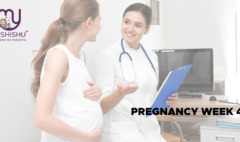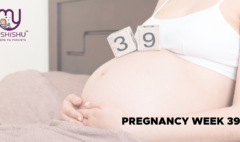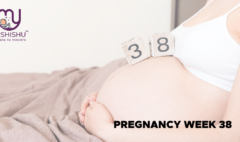Back Pain After C-Section: Tips for Postpartum Recovery with Courage
Back Pain After C-Section: Tips for Postpartum Recovery with Courage
Introduction
Welcome to a guide on the topic of back pain after c-section. As you embark on the beautiful journey of motherhood, it’s essential to prioritize your health and well-being, especially during the postpartum period. After undergoing a cesarean section (C-section) delivery, your body undergoes significant changes as it heals from the surgical procedure and adjusts to the demands of caring for your newborn.
Among the various challenges you may encounter, back pain after c-section is a common issue that many mothers experience. In this blog, we’ll explore the causes of back pain after C-section and provide valuable insights and tips to help you manage and alleviate back pain after c-section effectively. Remember, taking care of yourself is key to nurturing both yourself and your precious little one.
Table of Contents
Understanding Back Pain After C-Section
Following a cesarean section (C-section) delivery, many mothers may experience back pain after c-section, which can range from mild discomfort to more severe sensations. Understanding the underlying causes of back pain after a c-section is crucial for effective management and relief.
- Surgical Trauma: The C-section procedure involves making an incision in the abdominal wall and uterus to deliver the baby. This surgical trauma can lead to postoperative discomfort, including back pain after c-section, as your body heals.
- Changes in Posture: Pregnancy itself can cause changes in posture as your body adjusts to accommodate your growing baby. After delivery, these changes may persist, leading to strain on the back muscles and discomfort.
- Muscle Weakness: The abdominal muscles play a vital role in supporting the spine and maintaining posture. During a C-section, these muscles may be weakened or cut, leading to instability in the core and increased stress on the back muscles causing back pain after c-section.
- Hormonal Changes: Pregnancy hormones like relaxin, which relaxes the ligaments in the pelvis to facilitate childbirth, can also affect other joints and ligaments in the body, including those in the back. These hormonal changes may contribute to back pain after c-section.
- Lifting and Carrying: Caring for a newborn involves frequent lifting, bending, and carrying, which can strain the back muscles, especially in the weeks following a C-section when your body is still recovering causing back pain after c-section.
Understanding these factors can help you take proactive steps to manage and alleviate back pain after c-section, promoting a smoother recovery process after a C-section.
Causes of Back Pain After a C-section
Several factors can contribute to back pain after c-section, ranging from the physical trauma of the surgery to hormonal changes and altered posture. Here are some common causes of back pain after a c-section:
- Surgical Incision: During a C-section, an incision is made in the abdominal wall and uterus to deliver the baby. This surgical trauma can lead to discomfort and back pain after c-section in the lower back, especially near the incision site, as the tissues heal.
- Changes in Posture: Pregnancy can alter a woman’s posture as her body adapts to the growing fetus. After delivery, these changes may persist, causing strain on the muscles and ligaments in the back causing back pain after c-section. Additionally, the act of breastfeeding or caring for a newborn may further exacerbate poor posture and contribute to back pain after c-section.
- Muscle Weakness: The abdominal muscles play a crucial role in supporting the spine and maintaining posture. During a C-section, these muscles may be weakened or damaged, leading to instability in the core and increased stress on the back muscles causing back pain after c-section.
- Hormonal Changes: Pregnancy hormones like relaxin, which relax the ligaments in the pelvis to facilitate childbirth, can also affect other joints and ligaments in the body, including those in the back. These hormonal changes may contribute to increased flexibility but also instability and discomfort in the back leading to back pain after c-section.
- Stress on the Spine: The added weight of pregnancy and the strain of carrying a baby can place increased stress on the spine and lower back. This stress can persist after delivery, especially if the abdominal muscles are weakened or if there is poor posture which causes back pain after c-section.
- Scar Tissue Formation: Scar tissue can form at the site of the C-section incision as the body heals. This scar tissue may cause stiffness and tightness in the surrounding muscles and tissues, leading to back pain after c-section and discomfort in the back.
Understanding these potential causes of back pain after a c-section can help women take proactive steps to manage and alleviate back pain after C-section, promoting a smoother recovery and improved overall well-being.
Types of Back Pain After a C-Section
Back pain after C-section can manifest in various forms, each indicating different underlying issues. Understanding the different types of back pain after a c-section can help identify the cause and determine the most appropriate treatment approach. Here are some common types of back pain after a c-section:
- Incisional Pain: This type of pain originates directly from the surgical incision made during the C-section. It may feel like a sharp, stabbing sensation or a dull ache in the lower abdomen and pelvic area. Incisional pain typically improves as the incision heals but may persist for several weeks post-surgery.
- Muscle Strain: Muscular strain is a common cause of back pain after a C-section. It occurs when the muscles surrounding the incision site or those supporting the spine become overworked or overstretched during pregnancy, childbirth, or recovery. Muscle strain often presents as a dull, achy sensation in the lower back and may worsen with movement or activity.
- Nerve Pain: Nerve pain, also known as neuropathic pain, can occur if nerves in the abdominal or pelvic area are irritated or damaged during surgery. This type of pain may feel like tingling, burning, or shooting sensations radiating from the incision site to other areas of the body, such as the back or legs.
- Sciatica: Sciatica is a type of nerve pain caused by compression or irritation of the sciatic nerve, which runs from the lower back down the back of each leg. In some cases, pressure on the sciatic nerve during pregnancy or childbirth can lead to sciatic pain, characterized by sharp, shooting pain that travels from the lower back or buttocks down one or both legs.
- Postural Pain: Changes in posture, particularly during pregnancy and in the postpartum period, can contribute to back pain. Poor posture while breastfeeding, lifting, or carrying a newborn can strain the muscles and ligaments in the back, leading to discomfort and stiffness.
- Scar Tissue Pain: Scar tissue formation at the site of the C-section incision can cause pain and tightness in the surrounding tissues. Scar tissue may restrict movement and contribute to stiffness, particularly if it adheres to underlying structures like muscles or nerves.
Identifying the specific type of back pain can aid in the development of targeted treatment strategies, including pain management techniques, physical therapy exercises, and lifestyle modifications tailored to address the underlying cause and promote healing.

Tips for Managing Back Pain After a C-Section
- Practice Good Posture: Maintaining proper posture is essential for reducing strain on the back muscles and supporting the spine. Sit and stand up straight, keeping your shoulders back and your spine aligned. Avoid slouching or hunching over, especially when breastfeeding or carrying your baby.
- Use Proper Body Mechanics: When lifting or carrying your baby, bend at the knees and use your legs to lift, rather than bending at the waist. Hold your baby close to your body and avoid twisting or reaching awkwardly, which can strain the back muscles.
- Apply Heat or Cold Therapy: Applying heat or cold therapy to the affected area can help alleviate back pain and reduce inflammation. Use a heating pad, warm compress, or hot water bottle to apply heat to the lower back for 15-20 minutes at a time. Alternatively, you can use an ice pack or cold compress wrapped in a towel for 10-15 minutes to reduce swelling and numb the area.
- Practice Relaxation Techniques: Stress and tension can exacerbate back pain, so it’s essential to incorporate relaxation techniques into your daily routine. Deep breathing exercises, meditation, guided imagery, and progressive muscle relaxation can help relax the muscles, reduce stress, and alleviate back pain.
- Use Supportive Pillows: Place pillows strategically to provide support and alleviate pressure on your back while sitting or lying down. Use a supportive pillow behind your lower back when sitting and consider using a pregnancy pillow or body pillow to support your back and abdomen while sleeping.
- Consider Professional Treatment: If home remedies and self-care measures are not providing relief, consider seeking professional treatment for your back pain. Physical therapy, chiropractic care, massage therapy, acupuncture, and other complementary therapies can be beneficial for managing back pain and promoting recovery after a C-section.
Rehabilitation Exercises
- Pelvic Tilts: Lie on your back with knees bent and feet flat on the floor. Tighten your abdominal muscles and tilt your pelvis upwards, flattening your lower back against the floor. Hold for a few seconds and then release. Repeat this movement several times.
- Abdominal Bracing: Lie on your back with knees bent. Tighten your abdominal muscles as if pulling your belly button towards your spine. Hold this position for a few seconds while breathing normally. Repeat multiple times throughout the day.
- Bridge Exercise: Lie on your back with knees bent and feet flat on the floor. Lift your hips towards the ceiling while keeping your back straight. Hold the position for a few seconds and then lower your hips back down. Repeat for several repetitions.
- Cat-Cow Stretch: Start on your hands and knees with a neutral spine. Arch your back upwards (like a cat) while tucking your chin to your chest. Then, reverse the movement by dropping your belly towards the floor, lifting your head and tailbone (like a cow). Repeat this sequence several times.
- Seated Spinal Twist: Sit on the floor with your legs extended in front of you. Bend your right knee and place the sole of your right foot on the outside of your left knee. Twist your torso to the right, placing your left elbow on the outside of your right knee. Hold the stretch for 15-30 seconds.
- Pelvic Floor Exercises (Kegels): Kegel exercises strengthen the pelvic floor muscles, which can indirectly support the lower back. To perform Kegels, contract the muscles you would use to stop the flow of urine. Hold for a few seconds and then release.
Posture Awareness
Posture awareness is crucial for managing back pain after a C-section. Poor posture can exacerbate discomfort and strain on the back muscles, leading to increased pain. Here are some tips to improve posture awareness:
- Sit and Stand Tall: Maintain a neutral spine by sitting and standing tall with your shoulders back and relaxed. Imagine a string pulling you up from the top of your head. Avoid slouching or rounding your shoulders forward.
- Avoid Prolonged Sitting or Standing: Alternate between sitting, standing, and walking throughout the day to prevent muscle stiffness and fatigue. If you need to sit for an extended period, ensure your chair provides adequate lumbar support.
- Use Proper Body Mechanics: When lifting objects, bend at the knees and hips rather than the waist. Hold the object close to your body and use your leg muscles to lift rather than straining your back.
- Avoid High Heels: Opt for supportive, low-heeled shoes instead of high heels, which can throw off your body’s alignment and increase strain on your back muscles.
- Take Breaks: If you need to sit for an extended period, such as at a desk or while driving, take frequent breaks to stand up, stretch, and walk around.
- Mindful Movement: Pay attention to your body mechanics during daily activities, such as bending, lifting, and reaching. Avoid sudden, jerky movements that can strain the back muscles.
- Regular Stretching: Incorporate gentle stretching exercises into your daily routine to improve flexibility and relieve muscle tension. Focus on stretching the muscles of the back, hips, and legs to promote optimal posture.
By practicing good posture habits and remaining mindful of your body mechanics, you can help reduce back pain and discomfort after a C-section. Be patient with yourself as you adjust to postpartum changes, and seek guidance from a healthcare provider or physical therapist if you have persistent or worsening pain.
Additional Common Questions
-
Is it normal to experience back pain after a C-section?
Yes, it’s common for women to experience back pain after a C-section due to the strain placed on the abdominal muscles during surgery, changes in posture, and hormonal fluctuations.
-
How long does back pain typically last after a C-section?
The duration of back pain can vary from person to person. While some women may experience relief within a few weeks, others may continue to have discomfort for several months. It’s essential to practice proper posture and follow a rehabilitation program to aid in recovery.
-
Can breastfeeding worsen back pain after a C-section?
Breastfeeding can sometimes contribute to back pain, especially if done in a poor posture. It’s crucial to find a comfortable position while breastfeeding, such as using pillows for support, to prevent further strain on the back.
-
When should I seek medical attention for back pain after a C-section?
If the back pain is severe, persistent, or accompanied by other concerning symptoms such as fever, numbness or tingling in the legs, weakness, or loss of bladder or bowel control, it’s essential to seek medical attention promptly.
-
Are there any specific activities I should avoid to prevent exacerbating back pain after a C-section?
Certain activities, such as heavy lifting, twisting movements, and high-impact exercises, should be avoided initially to prevent aggravating back pain. Gradually reintroducing these activities under the guidance of a healthcare provider or physical therapist can help prevent further strain.
-
Can wearing a supportive abdominal binder help alleviate back pain after a C-section?
Wearing a supportive abdominal binder or postpartum girdle can provide additional support to the abdominal muscles and lower back, which may help alleviate back pain. However, it’s essential to consult with a healthcare provider before using any supportive garment to ensure it’s appropriate for your individual needs.
-
Can physical therapy help with back pain after a C-section?
Yes, physical therapy can be beneficial for relieving back pain, improving muscle strength and flexibility, and promoting proper posture and body mechanics. A physical therapist can create a customized rehabilitation program tailored to your specific needs and help you achieve optimal recovery.
Conclusion
Experiencing back pain after a C-section can be challenging, but it’s essential to remember that you’re not alone in this journey. Many women encounter similar discomforts during their postpartum recovery. Understanding the causes and implementing effective management strategies can help you navigate through this phase with more comfort and ease.

want to know more
Explore Our Courses


